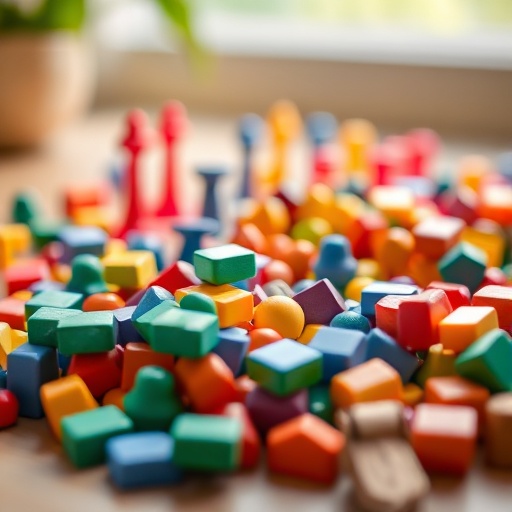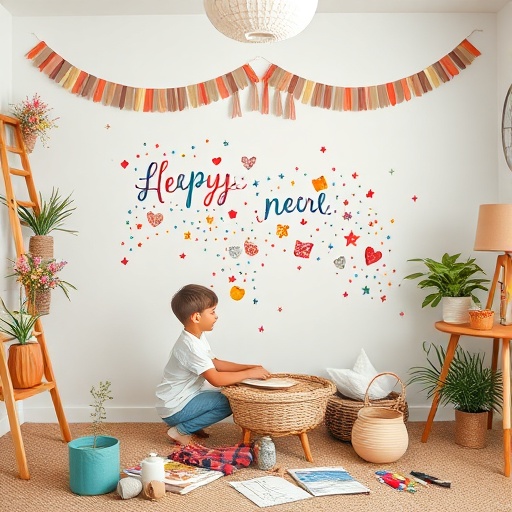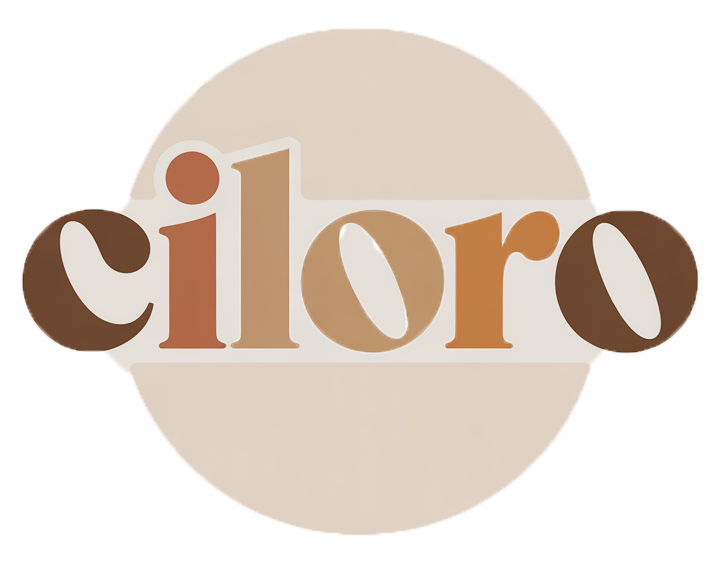Create Engaging Home Decor Games for Family Fun
In today's fast-paced world, finding time for family activities is essential for nurturing relationships and creating lasting memories. Engaging in fun and interactive experiences can significantly enhance family bonding, and one innovative way to do this is through home decor games. These games not only provide entertainment but also foster creativity and collaboration among family members.



This article will guide you through the process of creating a personalized home decor game that suits your family's interests and preferences. From understanding the basics of home decor games to planning, designing, and hosting your game night, you will find all the necessary steps to ensure a delightful experience for everyone involved.
Understanding the Basics of Home Decor Games
Definition of Home Decor Games
Home decor games are interactive activities that involve designing and decorating spaces, often in a playful and competitive format. These games can range from board games to DIY projects that challenge players to think creatively about aesthetics and functionality in their living environments.
Examples of popular home decor games include themed board games where players redesign rooms based on specific criteria, or DIY challenges where family members must use limited resources to create appealing decor.
Benefits of Playing Home Decor Games
- Enhances creativity and design skills by encouraging players to think outside the box.
- Fosters teamwork and collaboration among family members, as they work together towards a common goal.
- Provides learning opportunities about home aesthetics, color theory, and spatial arrangement.
Planning Your Home Decor Game
Setting Objectives for the Game
Before diving into the game creation process, it's crucial to establish clear objectives. Consider the purpose of your game: is it primarily for fun, education, or strengthening family bonds? Additionally, identify your target audience by considering age groups and family size to tailor the game appropriately.
Choosing a Theme
The theme of your home decor game sets the tone and direction for the entire experience. Suggestions for themes include:
- Seasonal themes, such as autumn decor or summer beach vibes.
- Color-based themes that challenge players to use specific palettes.
- Room-specific themes focusing on designing areas like kitchens or living rooms.
Aligning the theme with your family's interests will ensure greater engagement and enjoyment.
Determining Game Format
Deciding on the format of your home decor game is essential for its success. Here are some options:
- Board games: Traditional and easy to play, suitable for all ages.
- DIY projects: Hands-on experiences that allow for creativity.
- Digital apps: Interactive and modern, appealing to tech-savvy family members.
Each format has its pros and cons, so choose one that best fits your family's preferences and capabilities.
Gathering Materials for Your Game
Essential Supplies Needed
To create your home decor game, you'll need a variety of materials. Essential supplies may include:
- Paper and markers for designing game boards and cards.
- Stickers and embellishments for added creativity.
- Repurposed household items that can be used as game pieces or decor elements.
Creating Game Boards and Cards
Designing game boards and cards is a fun and creative process. Follow these steps to create your own:
- Sketch a layout for the game board, considering the flow of gameplay.
- Decide on the types of cards needed, such as challenge cards or decor tips.
- Use your materials to bring your designs to life, ensuring they are colorful and engaging.
Designing the Game Mechanics
Rules and Instructions
Establishing clear and concise rules is vital for a smooth gameplay experience. Make sure the rules are engaging and easy to follow, allowing players to jump right in without confusion.
Tip: Use simple language and examples to illustrate the rules clearly.
Scoring System
Your scoring system can add an element of friendly competition. Consider awarding points for:
- Creativity in designs.
- Teamwork and collaboration.
- Successful completion of challenges.
Time Limits and Rounds
Structuring gameplay can enhance the excitement. You can choose to have timed rounds for quick challenges or allow unlimited time for thoughtful design. Balancing fun and challenge is key to keeping players engaged.
Incorporating Creativity and Customization
Personalization Options
Allowing players to personalize their game experience can add depth to the gameplay. Offer options for players to choose colors, themes, or even the types of challenges they want to participate in. This input fosters a sense of ownership and investment in the game.
Adding Creative Challenges
Incorporating unique challenges can make your game even more enjoyable. Here are some ideas:
- Design a room using only three specific items.
- Create a decor piece using mystery items revealed during gameplay.
- Implement a challenge where players must redesign a space within a time limit.
Testing the Game
Playtesting with Family
Before finalizing your game, it's crucial to playtest it with family members. This allows you to observe how the game flows and identify any areas of confusion or difficulty.
Making Adjustments Based on Feedback
After playtesting, gather feedback and be prepared to make adjustments. Flexibility in game design is important, as it allows you to refine the gameplay experience based on actual player experiences.
Hosting a Family Game Night
Setting the Atmosphere
Creating a fun and inviting environment can enhance
the overall experience of your family game night. Consider these tips:
- Decorate the space to align with the game theme.
- Prepare snacks and refreshments that everyone will enjoy.
- Set up comfortable seating for all participants.
Engaging Everyone in the Game
To ensure all family members are involved
, use strategies such as assigning roles or tasks based on individual strengths. Keep the energy high and the mood light by incorporating humor and celebrating creativity throughout the game.
Expanding the Game Experience
Adding New Features Over Time
To maintain interest in your home decor game, consider adding new features over time. You can introduce seasonal updates or expansion packs that include new challenges, themes, or materials.
Sharing Your Game with Others
Don't keep your game to yourself! Share it with friends or extended family, and explore opportunities for community engagement. Hosting game nights with others can introduce fresh perspectives and ideas, enriching the experience for everyone involved.
Conclusion
Creating a home decor game is a rewarding endeavor that can significantly enhance family bonding and creativity. By following the steps outlined in this article, you can design a game that not only entertains but also fosters collaboration and learning. Start your game-making journey today and witness the positive impact of family fun activities on your relationships.
Recap
In summary, the benefits of creating a home decor game include:
- Strengthening family bonds
- Encouraging creativity and teamwork
- Providing a fun and educational experience
Key Takeaways
- Family activities are essential for nurturing relationships.
- Home decor games enhance creativity and teamwork.
- Planning and personalization are critical to game design.
- Playtesting helps refine gameplay for better experiences.
- Hosting a game night creates a memorable family experience.
FAQ
What are home decor games?
Home decor games are interactive activities that involve designing and decorating spaces, often in a competitive format.
How can I create a home decor game for my family?
Begin by setting objectives, choosing a theme, and determining the game format that best fits your family's interests.
What materials do I need for a home decor game?
Essential materials include paper, markers, stickers, and any repurposed household items that can enhance gameplay.
How do I ensure everyone is engaged during the game?
Assign roles based on individual strengths and keep the atmosphere light and fun to encourage participation from all family members.
Can I update my home decor game over time?
Yes, adding new features or seasonal updates can keep the game fresh and maintain interest among players.
